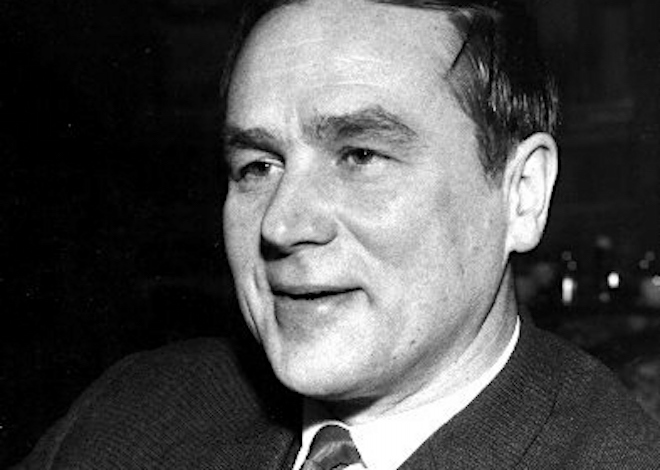He put his heart into the singing of Estonian folk songs. One notable example is his famous rendition of Raimond Valgre's “Saaremaa Valss” (“Saaremaa Waltz”, lyrics written by Debora Vaarandi). He cast up the spirit of Estonian island life in summer, and of country folk, in a way that distilled that moment in time. Long summer nights, bonfires, dancing, and partying. Timeless human experiences if you think about it.
At the same time as Ots' rise to fame, the popularity of opera surged here in Canada. In 1946, the Royal Conservatory's Opera School was founded, to train the post-war generation of Canadian opera talent. In 1950, the Royal Conservatory Opera Company was created (later renamed as the Canadian Opera Company). These institutions provided education and professional opportunities to performers in a way that was foundational to the continuation of opera as an art form.
This talent was supported by public broadcasting and taping of performances by the CBC Opera Company. Broadcasting expanded audiences across Canada's provinces and promoted each provincial opera company in between production seasons. Canadian audiences would be increasingly supplemented by European immigrants who were eager to continue attending the opera as they had before emigrating.
After the end of the Second World War, increased stability and prosperity provided a fertile ground for the growth of opera in Canada. But the performances themselves were a way for Canadians to mentally and emotionally process the events of the war.
Likewise, Georg Ots' singing and acting provided entertaining narratives and relief to people across Europe, and even further afield such as when he performed in Egypt.
With Georg Ots' music, opera seems to have offered fantasy and drama in a time of rebuilding. Opera communicated heavy human experiences and emotions that audiences were trying to process themselves.
Arguably Georg Ots' most famous operatic role was the character of the Demon in Anton Rubinstein's Demon. In this role, Ots played a tortured soul who must balance his desire to destroy divinely-created beauty and his infatuation with Tamara, the daughter of a Georgian prince. Ots' impassioned arias teetered on the edge between longing and torment.
He would find even greater fame through his lead role in the 1958 Russian film Mister X. Georg was Estonia's representative in what was allowed to be explored culturally in his situation. That is, songs and theatre productions were filtered and censored. While generally limited to the circulation and approved touring destinations inside the Soviet Union, Georg Ots toured extensively and promoted his voice and body of work as much as he could.
Financial backing and organizations dedicated to opera grew at a similar time and in a similar manner between Canada and Estonia. In 1865, a song and dramatic society called “Estonia” was created, which after the turn of the 20th century developed more and more theatre productions. In 1913, these productions found a dedicated home with the construction of the Estonia Theatre in Tallinn. 31 years after this, in 1944, Ots made his solo opera debut.
Perhaps the peak of Canadian opera after the Second World War was the 1967 Montreal World Exposition, where five international opera companies (the Hamburg State Opera, Milan's La Scala, Moscow's Bolshoi Opera, the Royal Swedish Opera, and the Vienna State Opera) all made their North American debut.
Here, to international audiences, the Canadian Opera Company (COC) presented Offenbach's Tales of Hoffmann and Harry Somers' Louis Riel, the latter of which was written for the Canadian centennial and has become one of Canada's most famous operas. While Estonian opera performers delved largely into the creations of the past, Canadian operas had started to introduce more recent Canadian history and characters.
100 years after Georg Ot's birth, we still look to the arts— including music, poetry, and opera—for a voice that speaks to our experiences, even across cultural boundaries.
Written by Vincent Teetsov




